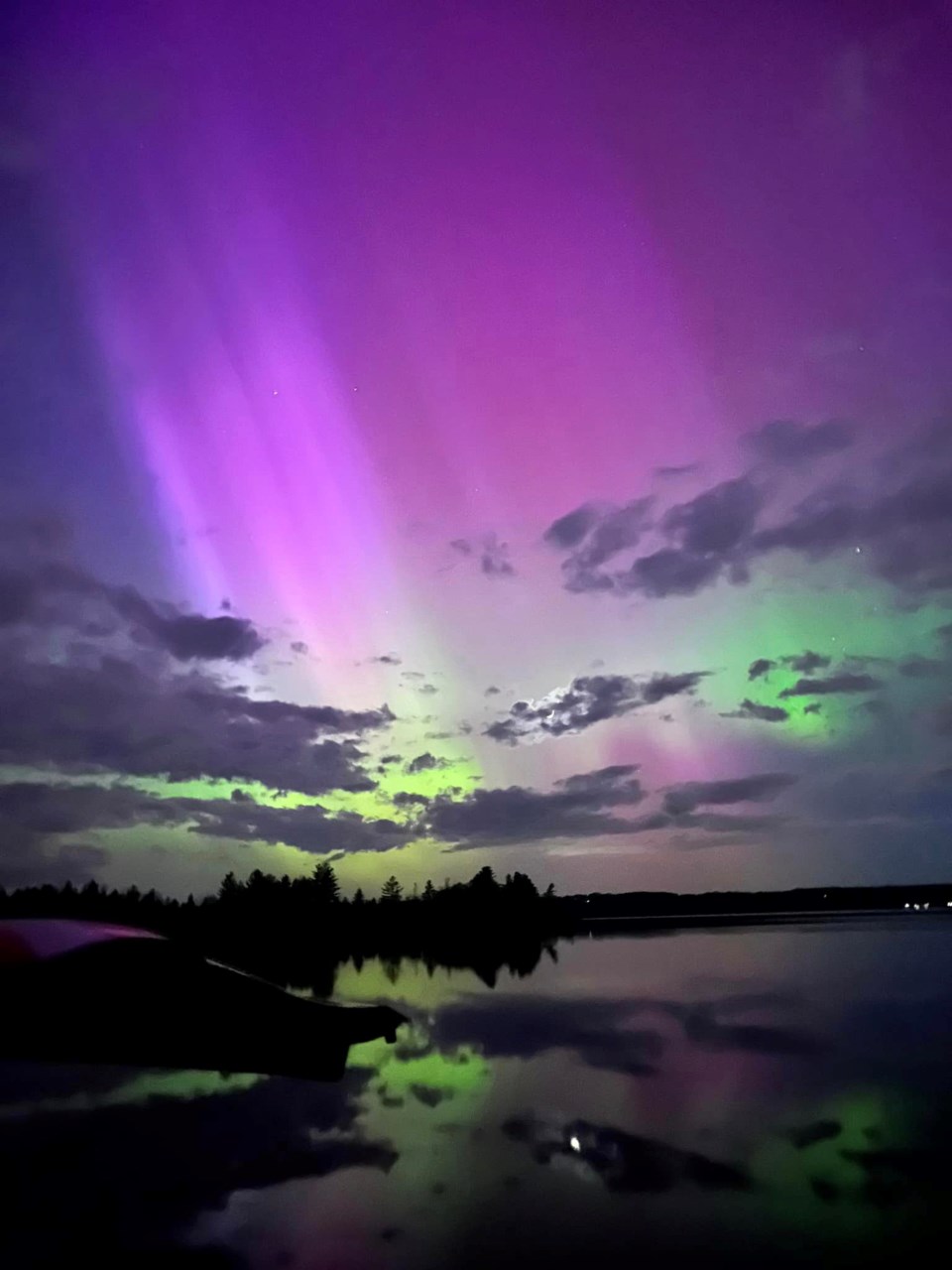If you have ever dreamed about seeing the aurora borealis in person, you may want to keep your eyes on the sky tonight.
A northern lights display is expected to be visible in most of Canada on Thursday into Friday and possibly even Saturday thanks to some solar activity this week.
This highly anticipated light show will add to the many major aurora borealis displays seen this year, all due to the sun’s magnetic field, which is at the peak of its 11-year cycle and putting out more solar storms, resulting in more frequent and strong displays of the northern lights
The Space Weather Prediction Center continues to project that by the time the geomagnetic storm reaches Canada, we could reach G4 (severe) storm levels, and it has even mentioned a G5 (extreme) storm isn’t out of the question.
A G5 storm is the same strength of storm that we saw May 10 and 11, resulting in an almost 13-hour display of the northern lights.
As long as the clouds don’t move in fully, and the sky stays clear, viewing and photographing the northern lights is always a star-studded time, and to help, here are some tips, whether you’re a beginner and tonight will be a first time or you’re an experienced chaser and want to pull an all-nighter.
First of all, safety tips. Most of the time, you have to get out of the light pollution to see them, and that means country backroads or farm fields.
- Bring a flashlight.
- Always be aware of your surroundings such as watching and listening for wildlife like bears or coyotes.
- Pay attention to trails, drop-offs, rocky terrain, and holes on shorelines and beaches, and make sure to never trespass on private property.
- If chasing alone or with people you’ve never met, always let a friend or family member know where you are.
- Be cautious driving unpaved roads, and always have a plan if you get stuck. Have a plan for other vehicle issues such as a dead battery or flat tire. It is recommended to bring an emergency kit in your vehicle.
General iPhone settings for photography
- Use night mode (iPhone 11 and later) or manual mode (third-party apps)
- Set exposure: three to 10 seconds
- ISO: Start between 400 and 600 and adjust as needed
- Turn off flash
- Focus: manual or infinity
- Use a three-second timer to avoid any camera shake
General Android settings
- Use pro/manual/night mode
- Set exposure: three to 10 seconds
- ISO: Start between 400 and 600 and adjust as needed
- Turn off flash
- Focus: manual or infinity
- Use a three-second timer to avoid any camera shake
Cameras
- Use a tripod
- Select manual mode on your camera
- Shutter speed: I always keep my Nikon D7500 on bulb and use a wired remote to control how long my shutter stays open. I’ll keep my shutter open for 10 to 13 seconds, sometimes more if I’m far away and capturing the auroras on the horizon, but if the auroras are directly overhead or more powerful and brighter, I’ll keep my shutter open for five to eight seconds, sometimes less.
- F-stop: As low as it possibly goes for the lens you are using. For example, my wide-angle lens goes down to 1.4, and that’s what I keep it at.
- ISO: This will depend on the quality of your camera. A camera that is great in low-light conditions can be set at an ISO between 400 and 800. For cameras that are not as great in low-light conditions, you might need to adjust that to 1600 or more. Be aware that the higher your ISO is, the “grainier” your picture will look.
- RAW vs JPEG. What file type should you use? Always RAW if you are doing any real editing. JPEG is fine for those who don’t plan on doing much to the photo.
- Turn off auto-focus. Manually focus your lens. This will give you better control to get sharp pictures.
That is the basic starting point for your cameras and phones. From there, you can fine-tune the settings to your desire.
If you’re looking for some northern lights apps or links for around here, I recommend spaceweatherlive.



